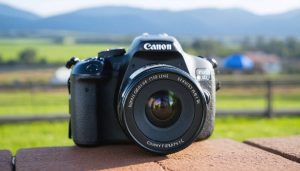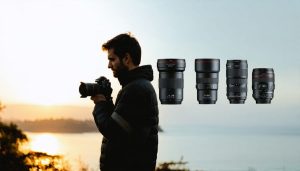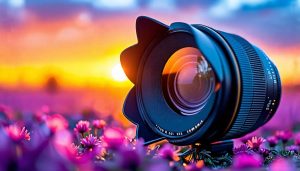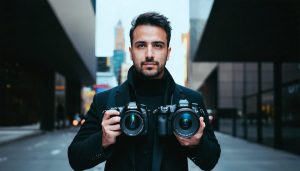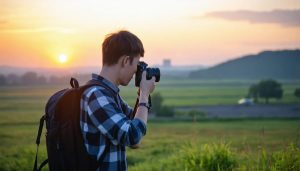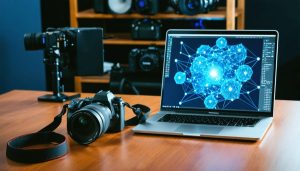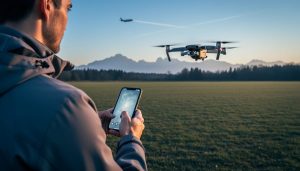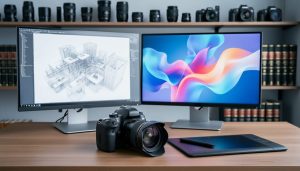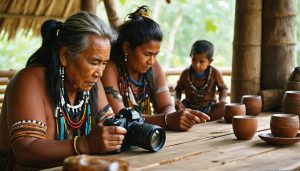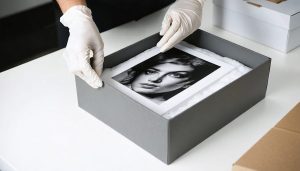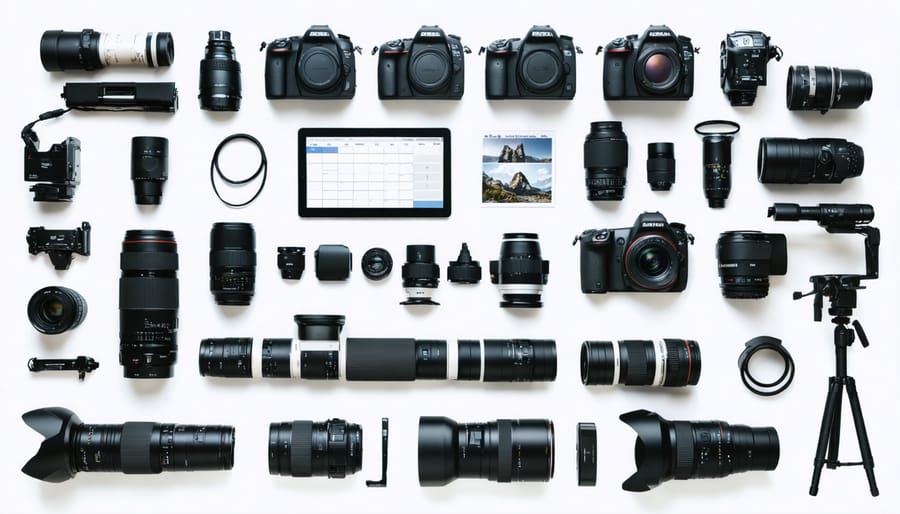
Transform your next photography project without the burden of expensive equipment purchases. Renting pro-level photography equipment delivers immediate access to high-end gear while keeping costs manageable and flexibility high. Whether you’re testing new gear before investing, tackling a one-off commercial shoot, or exploring different creative directions, equipment rental opens up professional possibilities without the long-term commitment.
Professional rental houses now offer everything from basic DSLR kits to specialized lighting setups and medium format systems, complete with insurance options and expert technical support. Modern rental platforms have streamlined the process – browse extensive inventories online, schedule pickup times, and even arrange direct delivery to your shoot location. This accessibility has revolutionized how both emerging and established photographers approach their craft, making premium gear accessible for projects of any scale.
For photographers serious about quality but mindful of budget, equipment rental represents the sweet spot between capability and cost-effectiveness. Reserve exactly what you need, when you need it, and focus your resources on creating exceptional images rather than maintaining an extensive gear collection.
Essential Photography Equipment Available for Rent
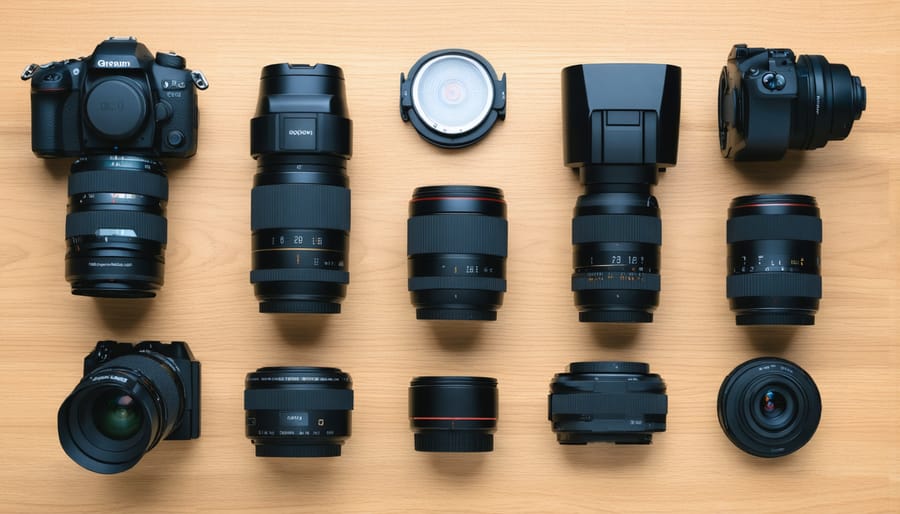
Camera Bodies and Lenses
When it comes to camera rentals, you’ll find an impressive selection of professional-grade equipment to suit any photography need. Top-tier DSLR bodies from manufacturers like Canon and Nikon are widely available, alongside cutting-edge mirrorless cameras from Sony, Fujifilm, and others. Whether you’re seeking the robust Canon EOS R5 for its exceptional autofocus or the Sony A7S III for its low-light capabilities, rental services typically stock the latest models.
The real magic happens when you explore the different types of lenses available for rent. From ultra-wide angle lenses perfect for landscape photography to macro lenses for intricate detail work, you’ll find options to match your creative vision. Premium telephoto lenses, which often cost thousands to purchase, can be rented for a fraction of their retail price. This makes specialized equipment like the Canon 70-200mm f/2.8 or Nikon 24-70mm f/2.8 accessible for specific projects or events.
Most rental services maintain their equipment meticulously, ensuring you receive professionally cleaned and calibrated gear. They also typically offer both full-frame and crop-sensor options to accommodate various shooting styles and budgets.
Lighting Equipment
When it comes to studio lighting equipment, rental options are vast and versatile. Most rental houses offer complete strobe lighting kits from trusted brands like Profoto, Broncolor, and Godox, including powerful pack-and-head systems and portable monolights. These typically come with essential modifiers such as softboxes, umbrellas, and beauty dishes to help shape and control your light.
For continuous lighting needs, you’ll find LED panels, fluorescent systems, and traditional tungsten lights available. Many rental facilities offer comprehensive lighting packages that include stands, sandbags, and grip equipment to ensure safe and stable setup. Popular add-ons include honeycomb grids, gels, and reflectors for creative light control.
Don’t forget about power solutions – most rentals include necessary cables, backup batteries for portable units, and wireless triggers for seamless operation. For location shoots, consider renting portable power packs or generators. Many facilities also offer guidance on selecting the right lighting setup for your specific needs, ensuring you get the most value from your rental investment.
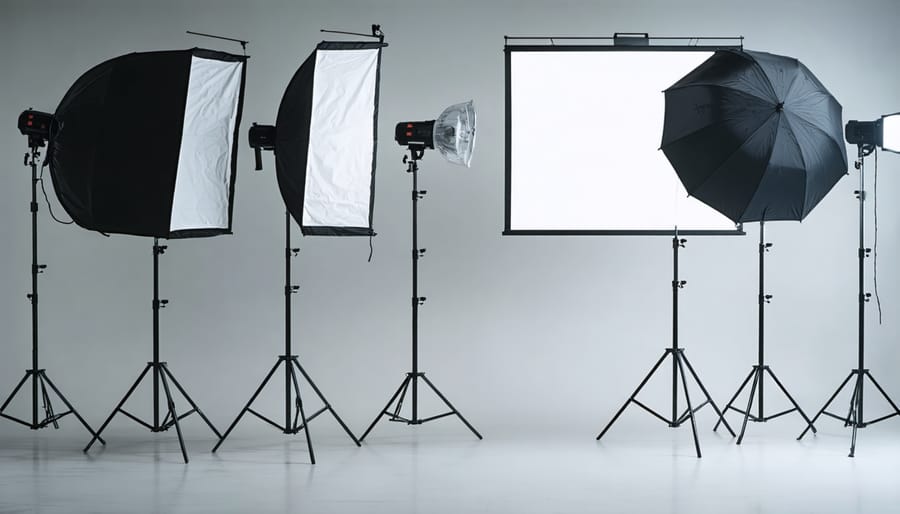
Support and Stabilization Gear
Support gear can make or break your photoshoot, and rental facilities offer an impressive array of stabilization equipment. Professional-grade tripods from brands like Manfrotto and Gitzo provide rock-solid support for long exposures and precise compositions. For video work, motorized gimbals such as the DJI Ronin series help achieve buttery-smooth motion shots, while traditional Steadicam systems remain popular for event coverage. Don’t overlook specialized items like slider rails for cinematic movements, monopods for quick setup in crowded spaces, and heavy-duty C-stands for lighting support. Many rental houses also stock sandbags, grip gear, and custom mounting solutions to ensure your equipment stays exactly where you need it, regardless of shooting conditions.
Where to Rent Photography Equipment
Local Camera Shops
Local camera shops offer unique advantages that online rental services can’t match. Being able to physically inspect equipment before renting, getting hands-on demonstrations, and receiving personalized advice from experienced staff make brick-and-mortar stores invaluable resources for photographers.
One major benefit is immediate availability – if you need equipment for a last-minute shoot, you can walk in and walk out with what you need. Store staff can also help you test equipment compatibility with your existing gear and provide local insights about shooting locations or technical requirements.
However, local shops typically have smaller inventories compared to online services, and their rates might be slightly higher to cover overhead costs. It’s worth building a relationship with your local camera store, as many offer loyalty programs or special rates for regular customers.
Before renting, check the store’s insurance requirements and damage policies. Most shops require a security deposit and valid ID. Some may also ask for proof of insurance or offer additional coverage options. Remember to thoroughly inspect equipment with staff before leaving the store and document any existing wear or damage.
Online Rental Services
The digital age has revolutionized photography equipment rental with several trusted online platforms making it easier than ever to access professional gear. LensRentals.com stands out for its extensive inventory and detailed condition reports, offering everything from basic DSLR kits to specialized cinema equipment. Their intuitive search filters and educational resources make it particularly appealing for both beginners and professionals.
BorrowLenses.com differentiates itself with flexible rental periods and nationwide shipping options. Their standout feature is the ability to reserve equipment months in advance, perfect for planning seasonal shoots or major events. They also offer virtual consultations to help you choose the right gear for your specific needs.
ShareGrid takes a unique peer-to-peer approach, connecting local photographers and videographers who want to rent out their equipment. This platform often offers competitive prices and the opportunity to inspect gear in person before renting. Their verification process and insurance coverage provide peace of mind for both parties.
For those seeking specialty items, AbelCine caters to high-end professional needs with top-tier cinema cameras and lighting equipment. Their technical support team is available throughout the rental period, making them ideal for complex productions.
Remember to compare shipping costs and rental durations across platforms, as these can significantly impact the total price. Most services offer insurance options and require a security deposit or valid credit card for booking.
Peer-to-Peer Rental Platforms
Peer-to-peer rental platforms have revolutionized how photographers access equipment, creating a sharing economy within the photography community. Services like KitSplit, ShareGrid, and Fat Llama connect photographers who own gear with those looking to rent, often at more competitive rates than traditional rental houses.
These platforms offer several advantages: local availability in areas that might not have dedicated rental shops, flexible pickup arrangements, and the opportunity to connect with other photographers in your area. Most platforms provide insurance coverage and verify both renters and owners, creating a secure environment for transactions.
For equipment owners, these services present an opportunity to earn passive income from gear when it’s not in use. Renters benefit from detailed equipment descriptions, real user reviews, and often the chance to ask questions directly to owners who know their gear inside and out.
Before using these services, carefully review the platform’s insurance policies, cancellation terms, and verification processes. Many photographers find success building relationships with reliable local owners, leading to repeat rentals and valuable networking opportunities within their photography community.
Smart Rental Tips and Considerations
Insurance and Protection Plans
When renting expensive photography equipment, protecting yourself from potential damages or loss is crucial. Most rental companies offer various insurance and protection plans, and understanding these options can save you from significant financial headaches.
Standard rental insurance typically covers accidental damage, theft, and loss during the rental period. However, coverage limits and deductibles vary significantly between providers. Many companies offer tiered protection plans, ranging from basic coverage to comprehensive packages that include worldwide protection and minimal deductibles.
Before accepting a rental company’s insurance, check your existing coverage. Some professional photography insurance policies and even certain credit cards may already provide protection for rental equipment. However, verify the specific terms, as these policies might have limitations or exclusions for professional use.
Consider these key factors when evaluating protection plans:
– Deductible amounts
– Coverage limits
– Geographic restrictions
– Exclusions (water damage, negligence, etc.)
– Claims process and documentation requirements
Most rental companies require either proof of insurance or the purchase of their protection plan before releasing equipment. While insurance adds to your rental costs, typically 10-15% of the rental fee, it’s a small price compared to potentially replacing expensive gear out of pocket.
Remember to thoroughly document the equipment’s condition during pickup and return, taking photos or videos as evidence. This documentation can prove invaluable if disputes arise about damage claims.
Rental Duration and Timing
Planning your rental duration strategically can help you maximize value and minimize costs. Most rental companies offer daily, weekend, and weekly rates, with longer rental periods typically providing better value per day. For example, a week-long rental might cost only three times as much as a two-day rental, making it more economical for extended shoots.
Consider booking equipment during off-peak times to secure better rates. Many rental houses offer discounted prices during weekdays or slower seasons. If you’re planning a weekend shoot, try picking up the equipment on Friday afternoon and returning it Monday morning – many vendors don’t count Sunday in their rental calculations.
To avoid rush fees, always build in buffer time for testing equipment and dealing with unexpected delays. A good rule of thumb is to rent for one day longer than your actual shoot duration. This extra time allows you to familiarize yourself with the gear and ensure everything works properly before your shoot.
For recurring projects, ask about monthly rental options or package deals. Some rental companies offer loyalty programs or bulk booking discounts that can significantly reduce your overall costs. Remember to factor in shipping time if you’re renting online, as transit days often count toward your rental period.
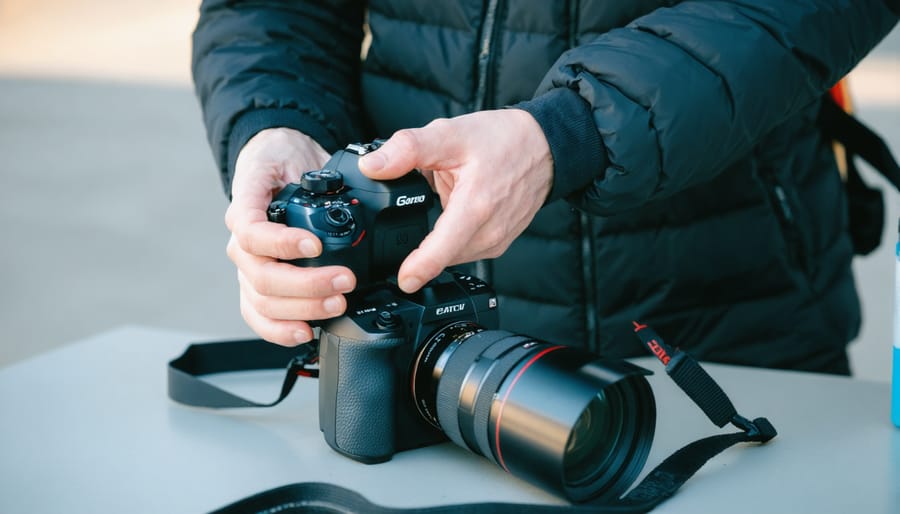
Equipment Inspection and Testing
Before accepting rental equipment, conducting a thorough equipment quality inspection is crucial to ensure everything functions properly and avoid potential issues during your shoot. Start by checking the lens elements for scratches, fungus, or dust. Gently rotate the focus and zoom rings to verify smooth operation without grinding or unusual sounds.
For camera bodies, test all buttons, dials, and switches. Ensure the hot shoe mount is clean and undamaged, and verify that memory card slots work correctly. Check the sensor for visible dust or marks through the viewfinder, and test the battery compartment for proper connection.
Pay special attention to electronic connections between lenses and camera bodies. Mount and unmount the lens several times to confirm proper communication. Take test shots at various settings to check exposure accuracy, autofocus performance, and image quality.
For lighting equipment, test flash units for consistent firing and proper recycling times. Examine light stands for stability and smooth height adjustments. Check all cables and connectors for fraying or damage.
Document any existing damage with photos and ensure it’s noted on the rental agreement. Don’t hesitate to request a replacement if something doesn’t meet your standards – reputable rental houses understand the importance of providing reliable equipment for their clients.
Hidden Costs and Fees
When renting photography equipment, be aware that the advertised daily rate isn’t always the complete picture. Insurance coverage typically adds 10-15% to your total, and while it might seem optional, it’s usually non-negotiable for high-end gear. Many rental houses also charge for extra days if you pick up equipment late in the day before your shoot, even if you’re returning it early the next day.
To avoid unexpected costs, carefully read the fine print about cleaning fees. Some companies charge if equipment returns with excessive dirt or wear. Memory cards often need to be formatted before return, or you might face a small fee. Additionally, watch out for rush hour pickup and drop-off fees at busy locations.
Save money by booking during off-peak seasons and weekdays when rates are typically lower. Many rental houses offer multi-day discounts, sometimes up to 30% off for weekly rentals. Planning ahead also helps avoid express processing fees for last-minute bookings. Consider joining loyalty programs or becoming a member at your preferred rental location – these often include perks like free shipping or priority booking.
Renting photography equipment can be a game-changer for both aspiring and professional photographers. By carefully considering your project needs, budget, and timing, you can make the most of equipment rental services while keeping your photography adventures both exciting and cost-effective.
Remember to always thoroughly inspect equipment before renting, document any existing damage, and understand the rental agreement terms. Working with reputable rental companies ensures you’ll have access to well-maintained gear and reliable customer support when you need it. Don’t forget to factor in insurance coverage to protect yourself against unexpected accidents or damage.
For beginners, starting with basic rental equipment can help you learn what features matter most before making significant investments. Professional photographers can benefit from renting specialized gear for specific projects or testing new equipment before purchasing.
Whether you’re shooting a wedding, planning a landscape photography trip, or exploring studio photography, equipment rental provides the flexibility to access high-end gear without the long-term commitment. By following the guidelines we’ve discussed and maintaining open communication with your rental provider, you’ll be well-equipped to create stunning images while managing your resources wisely.
As you continue your photography journey, consider building a relationship with a trusted rental provider. This can lead to better rates, priority access to popular equipment, and valuable advice on gear selection for your specific needs.

